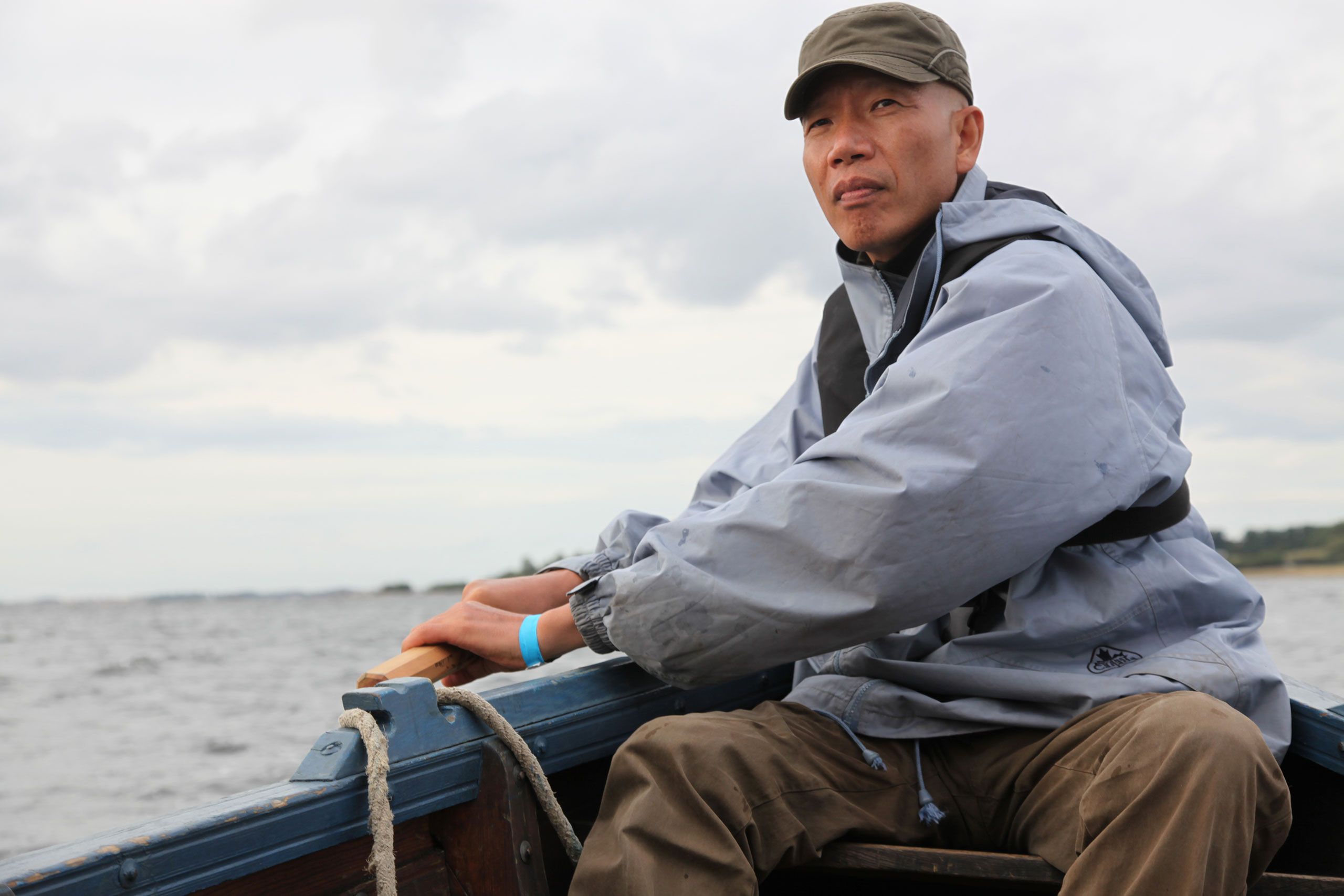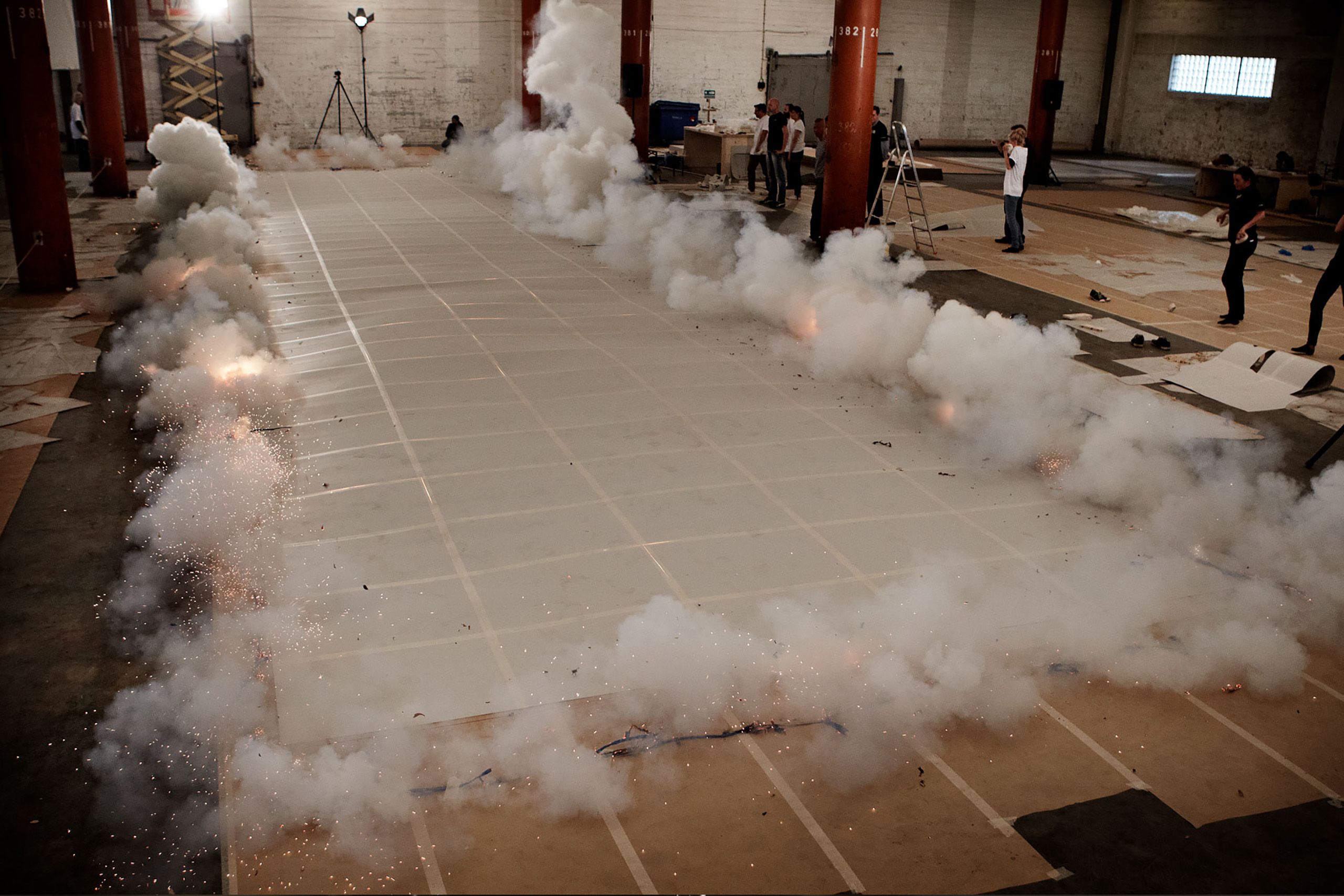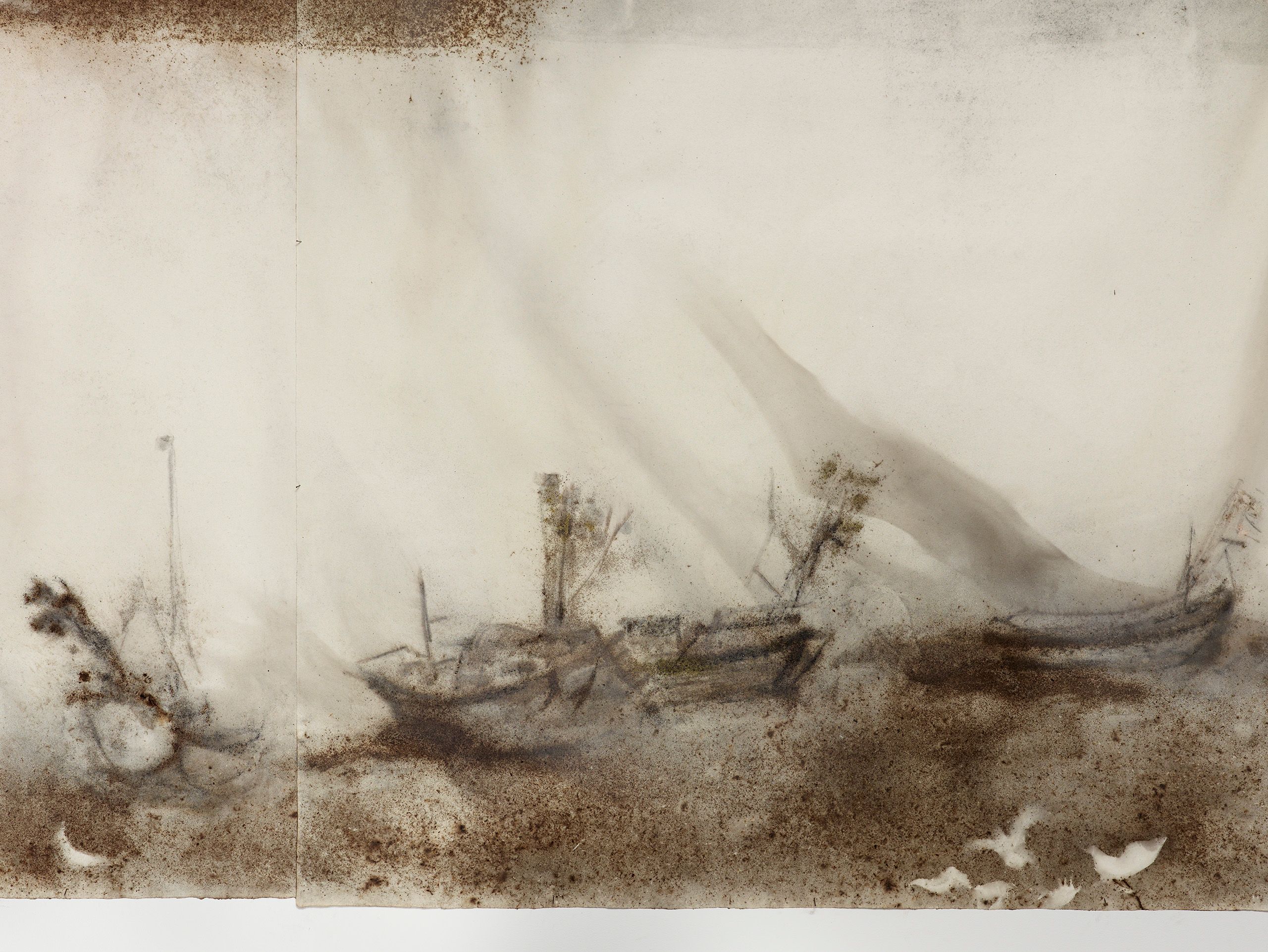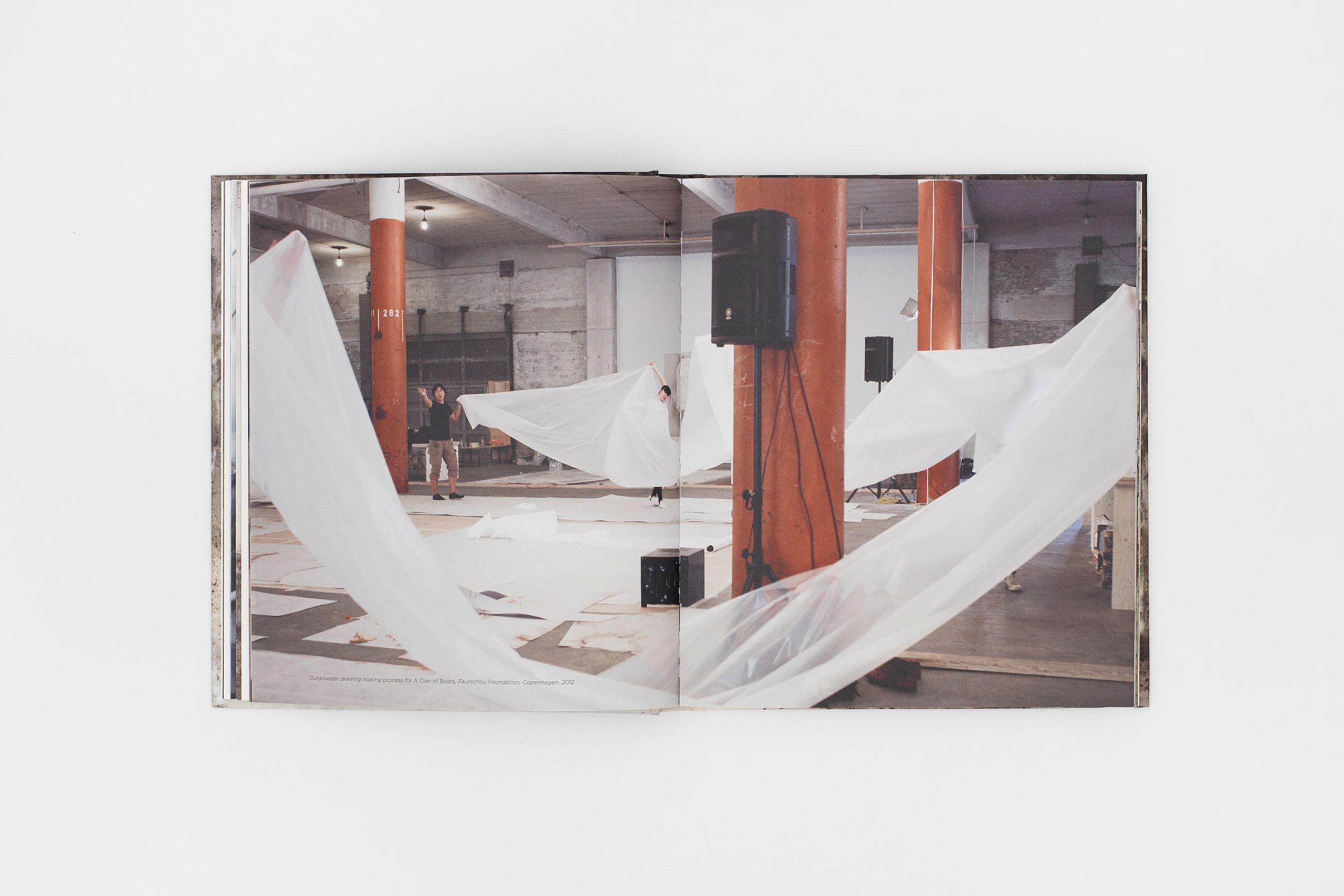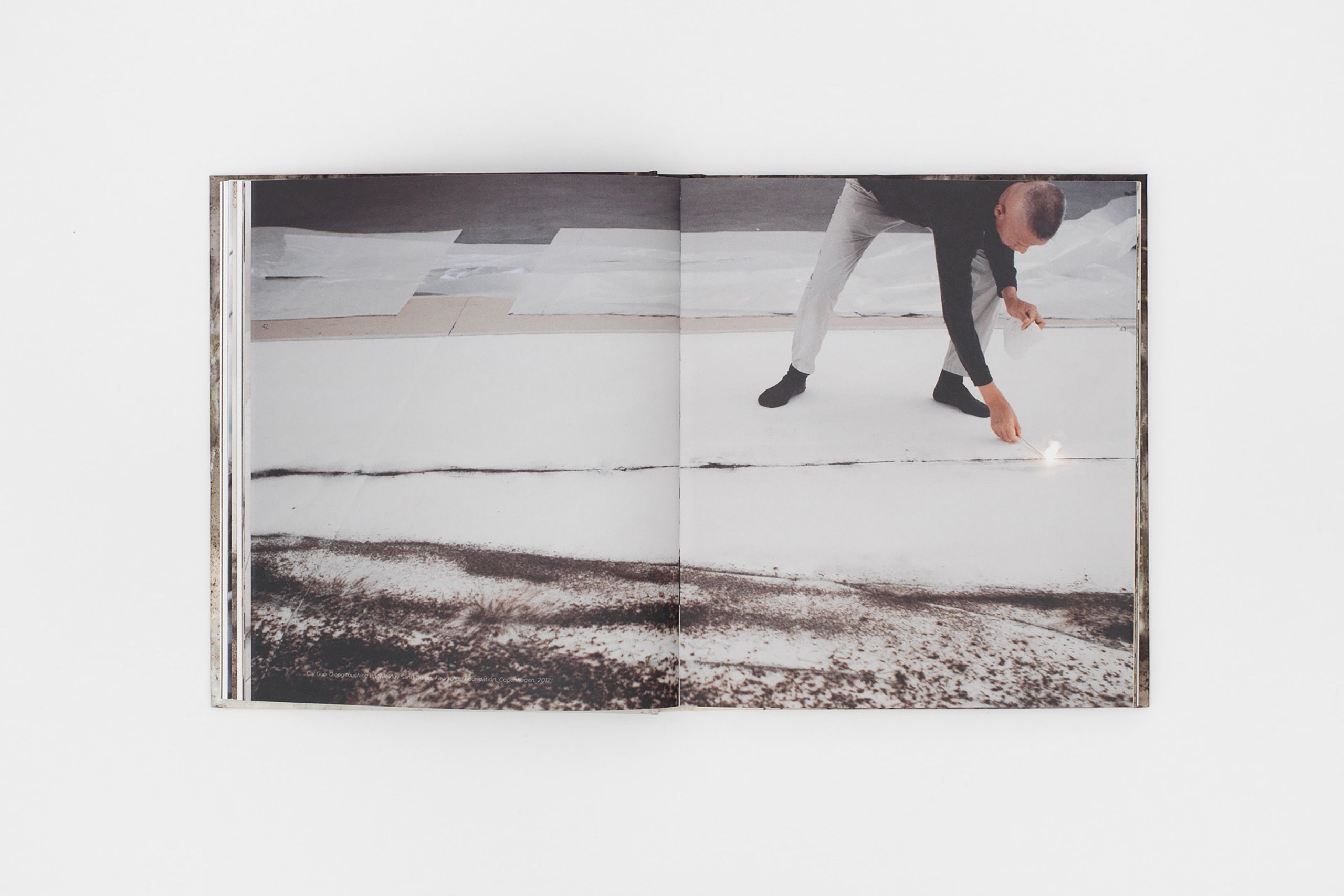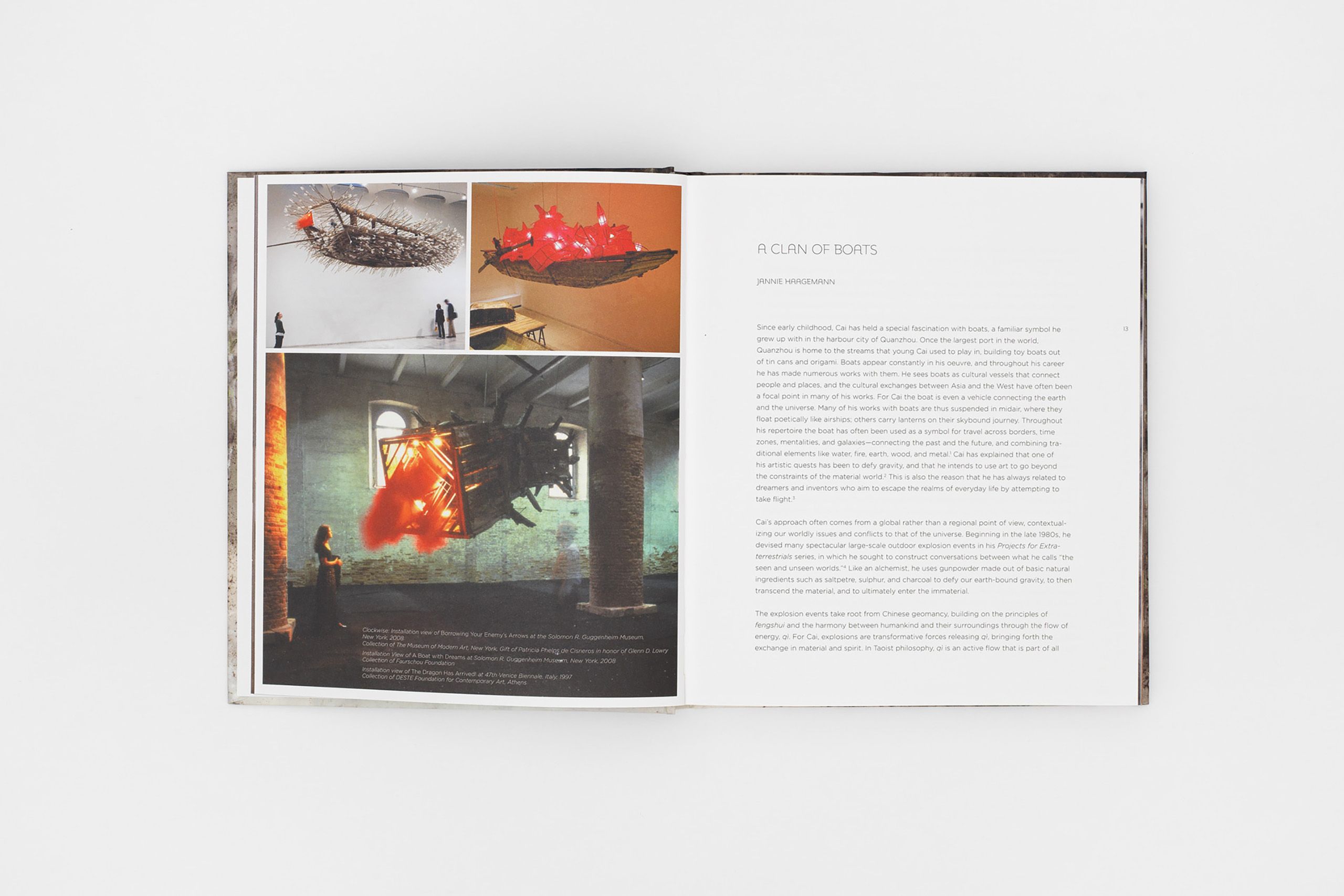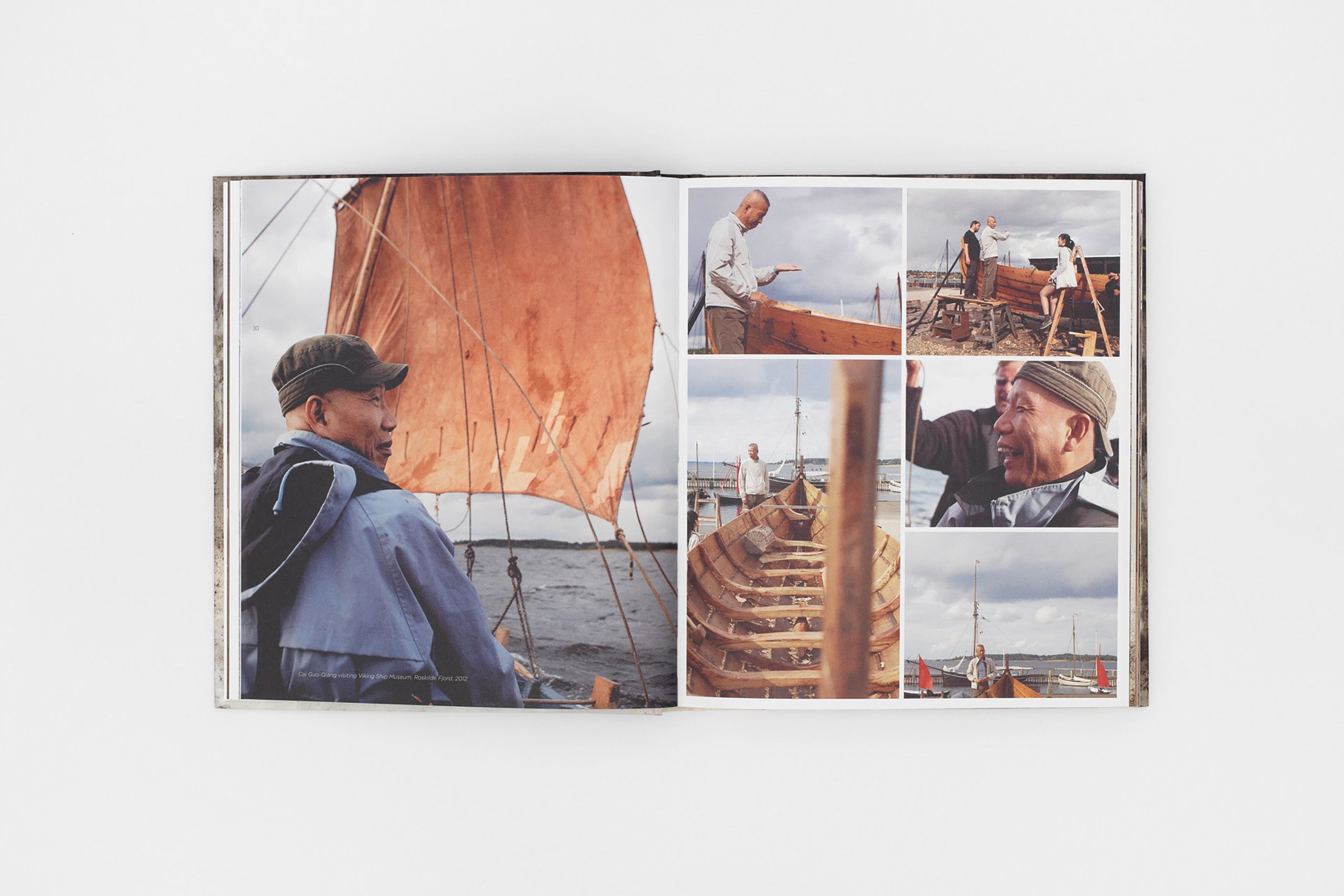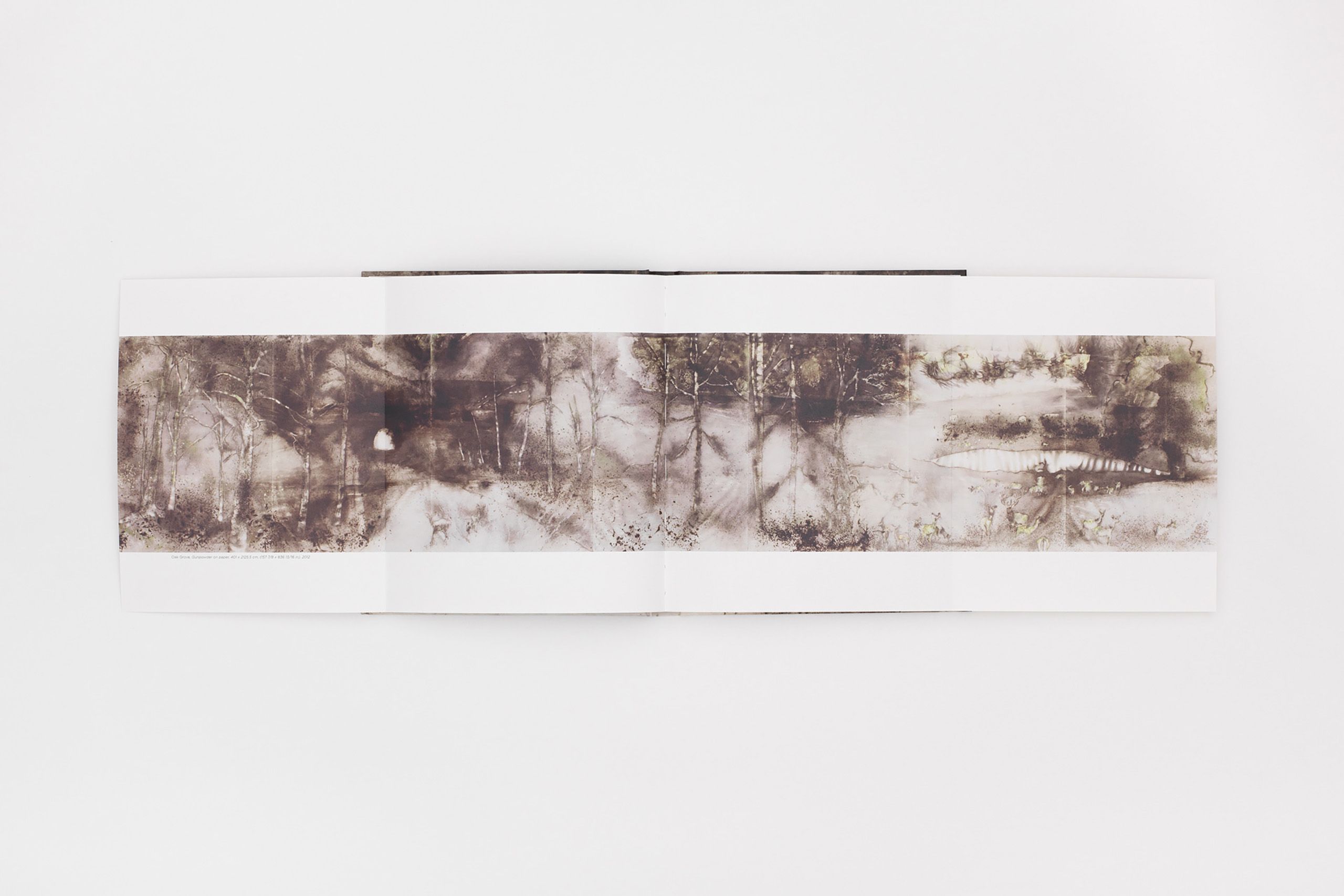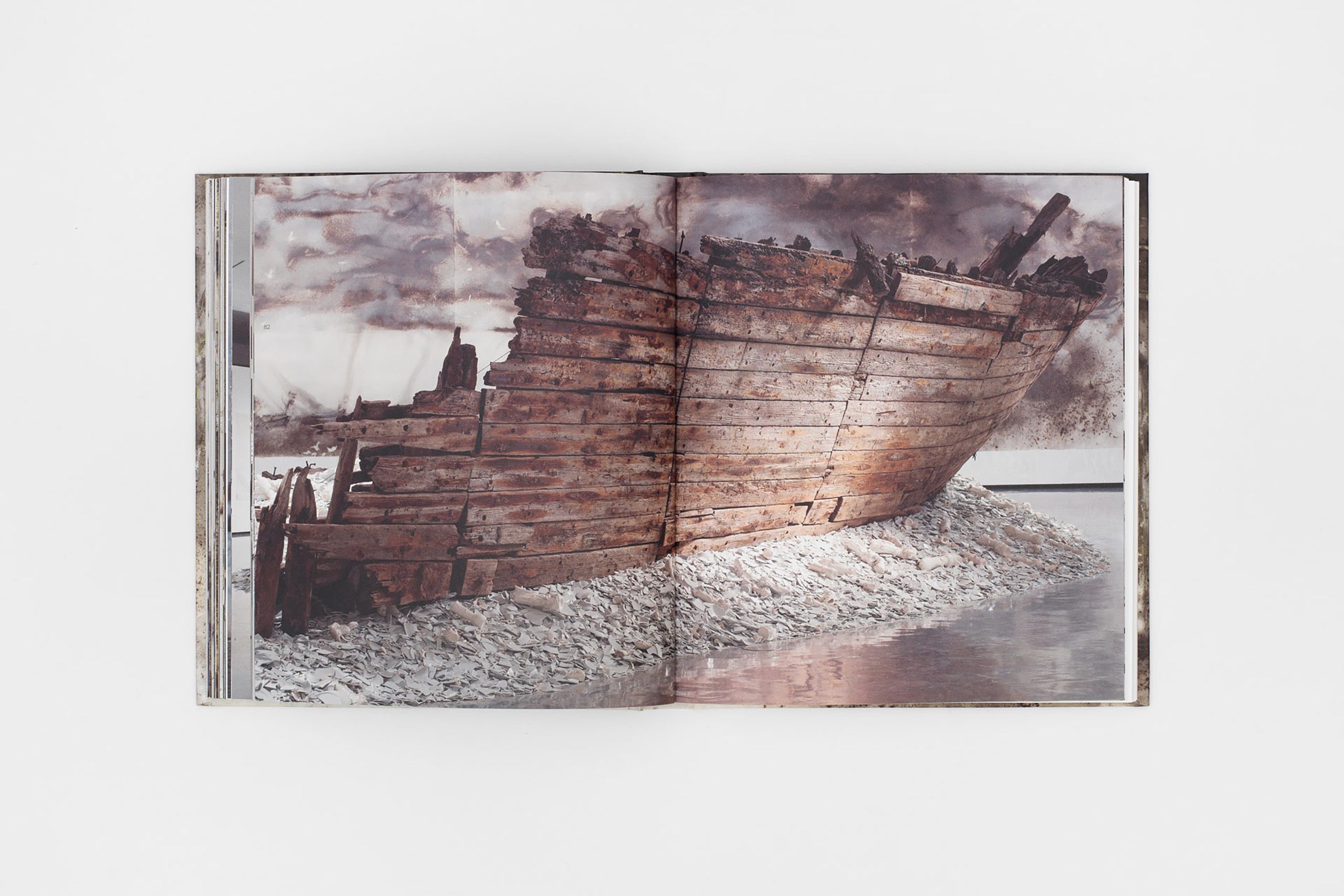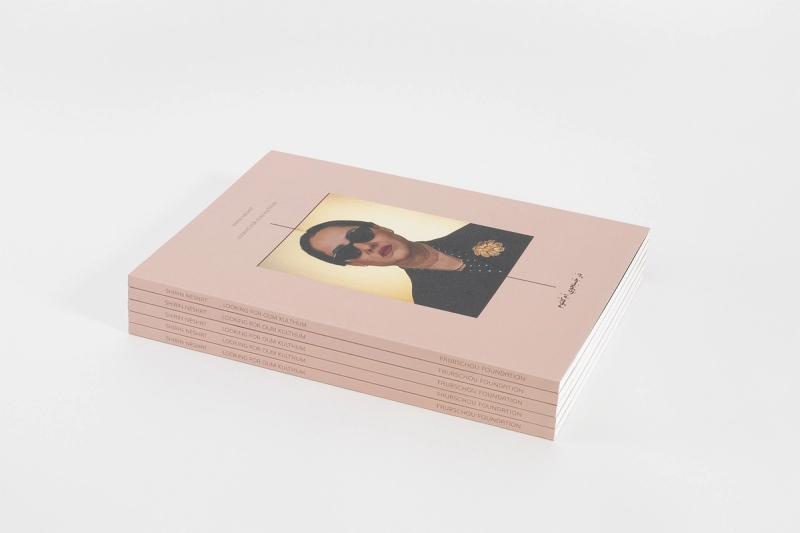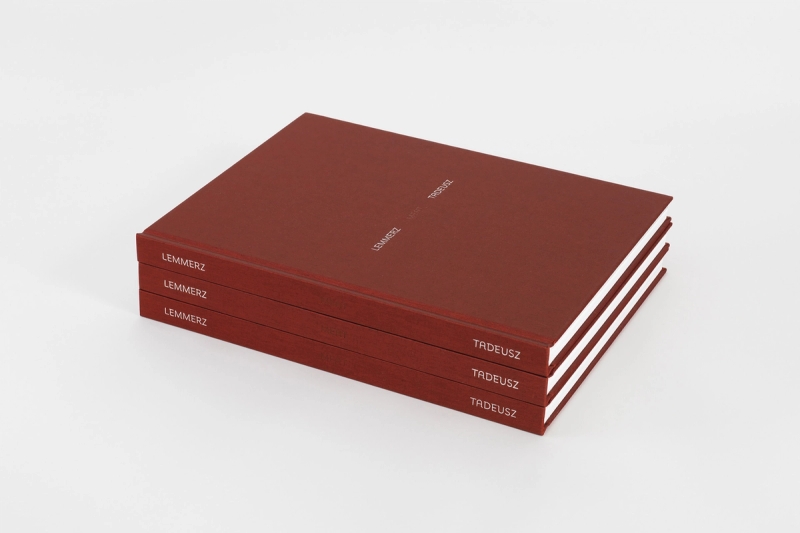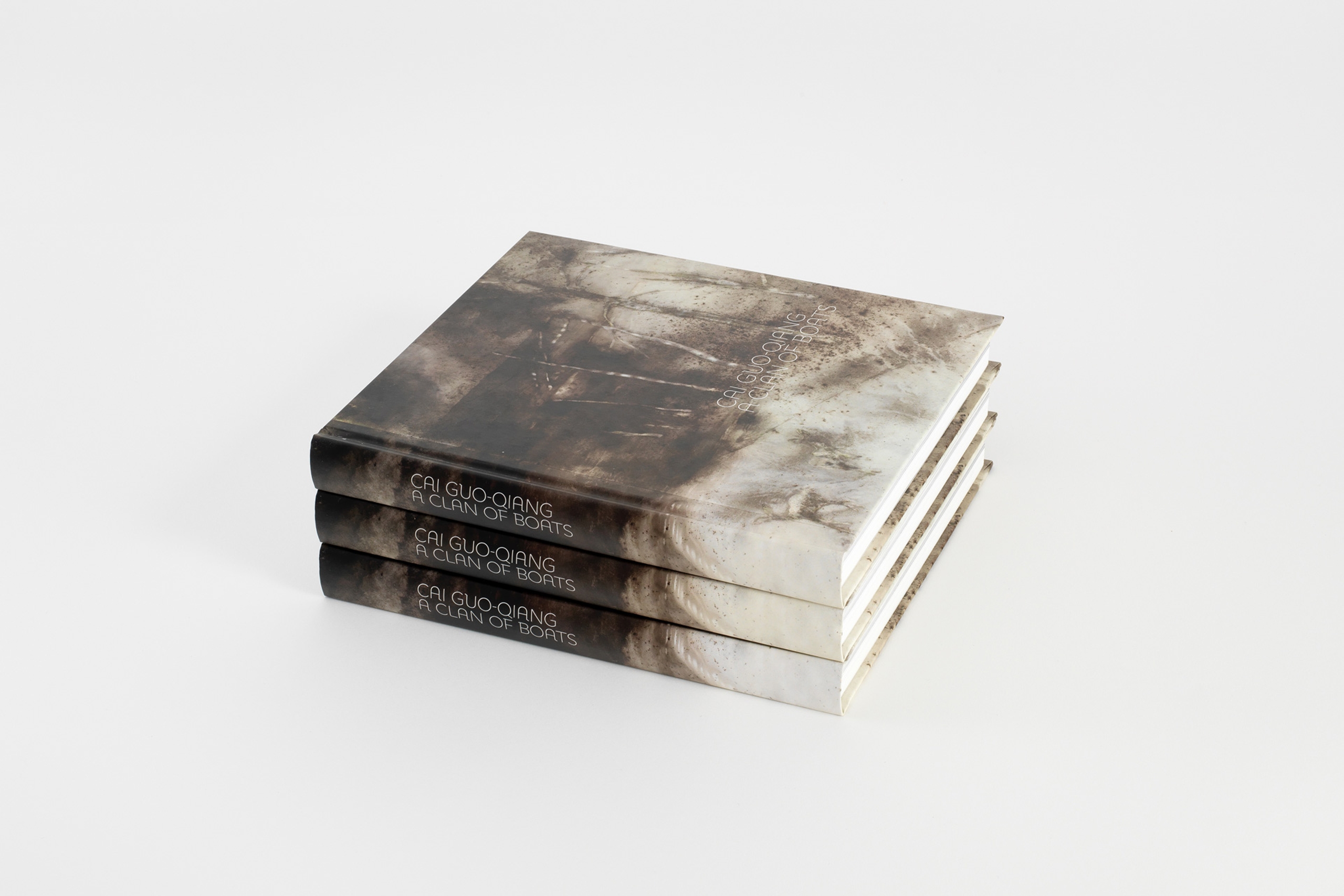
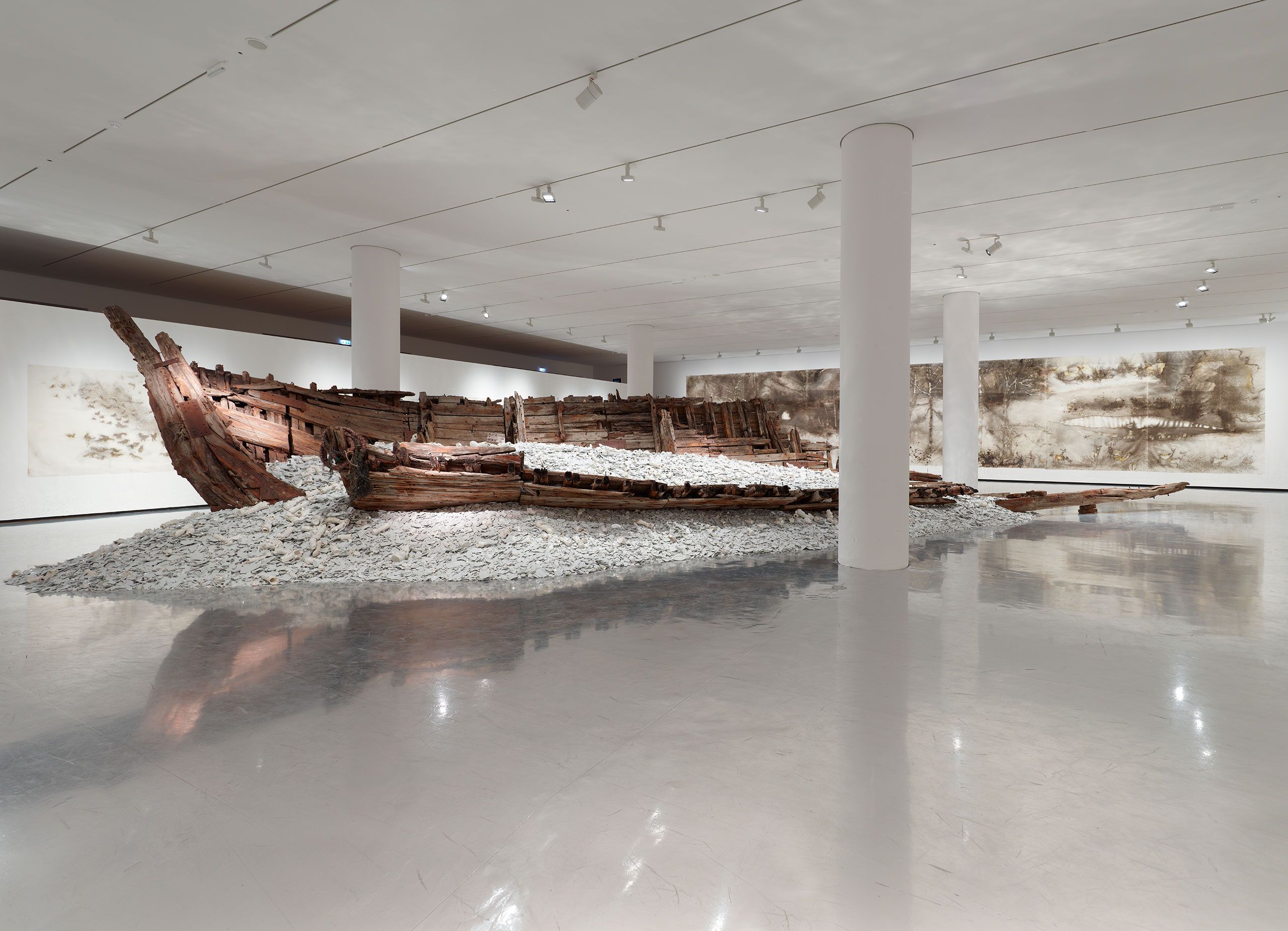
Art is most genuine when it reveals contradictions
Cai Guo-qiang

For Cai Guo-Qiang explosions are transformative forces releasing qì, bringing forth the exchange in material and spirit. In Taoist philosophy, qì is an active flow that is part of all living things. The process of destruction is a transition from existence to non-existence; as one material is destroyed, another is created. Like an alchemist, Cai uses gunpowder made out of basic natural ingredients such as saltpetre, sulphur, and charcoal to defy our earth-bound gravity, to then transcend the material, and to ultimately enter the immaterial.
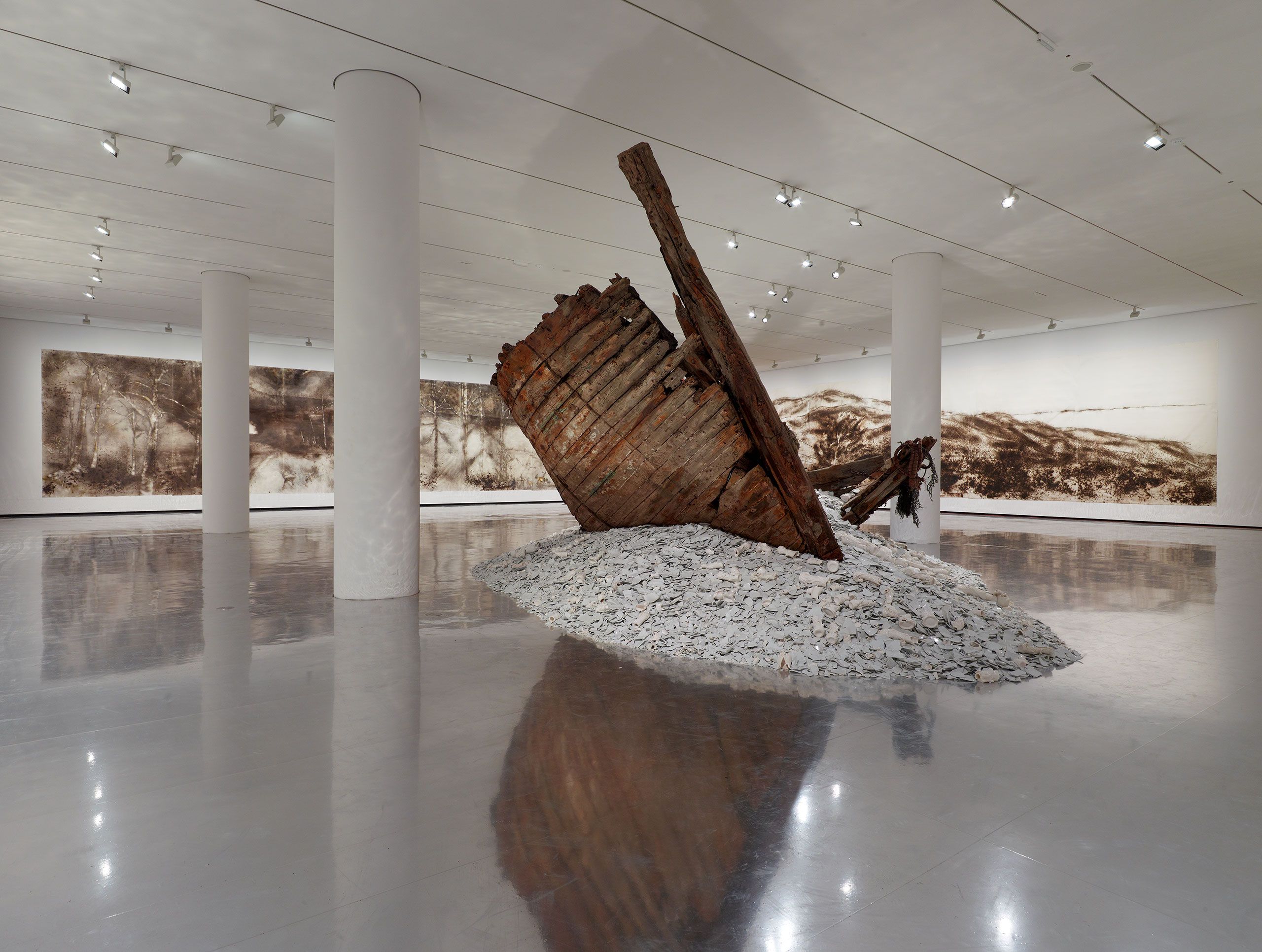
The fifteen-metre-long skeleton of a ship wreck is filled with a heap of broken white porcelain that flows over from the inside of the boat and out onto the floor. The pile of porcelain consists of broken statuettes of Buddhist Avalokitesvara, also known as bodhisattva of compassion. The snow-white porcelain shimmers in the light, and the entire installation evokes a sunken ship filled with treasure and alludes to other cultural and historical objects lost under the sea. It reflects the destructive power of time, and the inherent beauty brought out by its passage.
